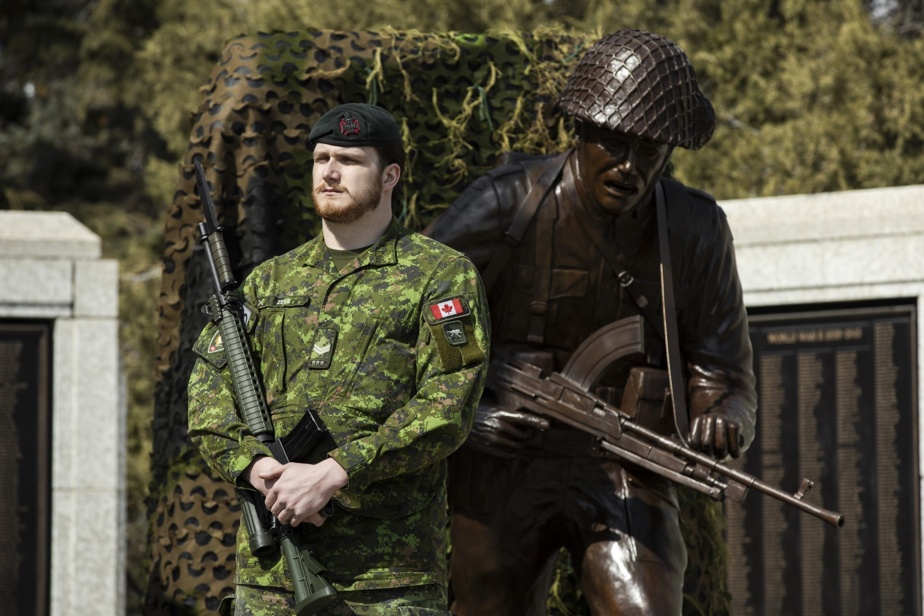(Regina) A statue of Canadians who fought against Nazi Germany 80 years ago will have a permanent home near the beaches they stormed on D-Day.
The Royal Regina Rifles statue is due to be unveiled at Juno Beach, France on Wednesday, a day before the anniversary of the invasion which marked the beginning of the end of the Second World War.
The names of the 458 soldiers of the unit who died during this conflict are engraved on the base of the statue.
Members of the Regina Rifles were among the first Canadians to storm Juno Beach on June 6, 1944, also known as D-Day. The soldiers fought alongside American and British troops to dislodge the Nazis from the north of France, marking a decisive turning point in the conflict.
Alberta artist Don Begg sculpted the two-metre bronze statue of a soldier in motion with his weapon raised. It was intended to represent the common man of Saskatchewan, explained Kelsey Lonie, military historian and spokesperson for the project.
She said the face of the statue represents a soldier anguished by battle, but determined to liberate France.
“We didn’t want her to look like anyone in particular,” M said.me Lonie, about the statue.
“Men from across Saskatchewan – dentists, farmers, indigenous peoples and citizens – participated in the campaign. »
The statue was displayed earlier this year during a ceremony at the Saskatchewan War Memorial outside the Regina Legislative Assembly. She also stopped at the neighboring Peepeekisis First Nation. More than 40 members of the community served during the war.
Nearly 150,000 Allied troops stormed the French beaches on D-Day, including 14,000 Canadians. By the end of the battle, 209,000 people were dead, including nearly 19,000 Canadians.
Nick Kazuska, a 104-year-old veteran who landed at Juno Beach that day, was present at the ceremony in Regina.
“I don’t remember much about D-Day. I remember that the bombing knocked me down,” said Mr. Kazuska, during an interview from his home in Saskatoon.
Mme Lonie said the statue was meant to keep those memories alive.
“A lot of veterans have died. And one of the things we were afraid of was that the memories would fade with time and there would be no one to carry on this legacy,” she said.
“As time passes, (the statue) acts as a bookmark, where we can continue to turn the pages of history, but always return to this moment, because there is a monument that refreshes our memory . »
Mme Lonie and members of the Regina Rifles were traveling to France for the unveiling ceremony. They will also participate in a 10-day tour, including a tour of the battlefield.
Veterans Affairs Canada said a handful of those who fought on D-Day will also attend.
“I think I’m just really interested in talking with (the veterans) and thanking them for their service,” Ms.me Lonie.
Veterans’ children are extremely grateful, she added, because their parents don’t always tell much about their time in war.
“A lot of time has passed, so a lot of life has been lived,” she said.
“I think as they got older, they realized the importance of what they had done. When you’re there, you’re not even sure it’s going to work. You just follow orders, land, and hope you can liberate Nazi-occupied Europe. »
